HOME >> METRO SHANGHAI
The Viking Age
By Ni Dandan Source:Global Times Published: 2015-3-31 19:13:01
Talking about Vikings, many of us picture the image of ruthless, bloodthirsty pirates pillaging their way through the old world. But a new exhibition at the Suzhou Museum leaves us with a different, and more estimable, impression.
Forty-four artifacts dating back to the 8th century were put on display at the museum as part of Danish Cultural Season in China (2014-15), representing a glorious page in Danish history that has come to be referred to as the Viking Age.
Friis Arne Petersen, the Danish Ambassador to China, said that the most iconic relic of that era, the Viking boat, not only required tremendous strength to operate, but great craftsmanship to design. "The ships had to be robust enough for rough seas, to create speed and to carry cargo," he said.
An example of one such craft, the Eik Sande, is a full-scale reconstruction of a ship found at a burial mound in Norway in 1880. The identity of the warrior buried in the ship is unknown, but cut marks on the skeleton show that he died in battle sometime around the year 890. As Viking ships were a costly possession due to their intricacy and materials, only the wealthiest Vikings were buried in the magnificent ships, regarded as a vessel for "the final journey" to Valhalla, the warrior heaven of Norse mythology.
"Viking ships represent something very typically Danish, not just historically but also in terms of their symbol of us Danes as very global-oriented people," said the ambassador. "We are a small North European country, but we have always been seafaring and outgoing."
Marianne Blank, planner of the exhibition and project manager with the National Museum of Denmark, said Danes today continue to take pride in this part of history, which she wants to make more understandable for Chinese people.
"Being Viking means being tough. But we also hope that with this exhibition we can show the Chinese people how the Vikings had a special relationship with their ships - not just warships, but merchant ships, large seafaring vessels, small fishing boats and ferries for calmer waters," she said.
In addition to the Eik Sande reconstruction, parts of other ancient Viking ships, original and replicas, are also on display at the museum. Among them, an exhibit called Dragon's Head received attention from Chinese attendees for resembling the traditional Chinese dragon totem.
Dragons were worshipped by Vikings as a symbol of strength. While the average Viking Age warship was designed with animal heads protruding from the prow, to protect them from sea monsters, the bows of some leaders' boats were embellished with a dragon's head.
Noting that the appearance of the Viking dragon is remarkably similar to the classic dragon designs of ancient China, Ambassador Petersen said that he believes there might have been some middlemen that introduced Viking craftsmen to Chinese dragon art.
Though the origin of the Viking dragon head is debatable, another technique from the Viking Age that definitely did originate in China is lost-wax casting. It is believed that this technique, whereby a duplicate metal sculpture is cast from an original work, had been brought from China to Europe by nomadic people crossing the Eurasian steppe. Metal objects made from lost-wax casting were sold in the jewelry stores of Ribe, one of the first-established Danish towns.
At the Suzhou exhibition, two Danes dressed in Viking costumes can be seen demonstrating the lost-wax casting technique using a small furnace and man-powered blower. Also displayed at the exhibition are ancient coins, accessories and Viking apparel, all collected by the National Museum of Denmark, Museum of South West Jutland, Aarhus University and the Viking Ship Museum.
"Danish Vikings traveled all the way to Iceland, to Greenland, even to America, around 1,100 years ago - long before Columbus ever dreamt of going there. That outgoing, maritime tradition has really carried Danish mentality to be willing to go everywhere," Petersen said. "That is why we have 500 Danish companies in China today."
The Suzhou Museum exhibition, titled Dragons of the Northern Seas - The Viking Age of Denmark, will remain open until June 28.
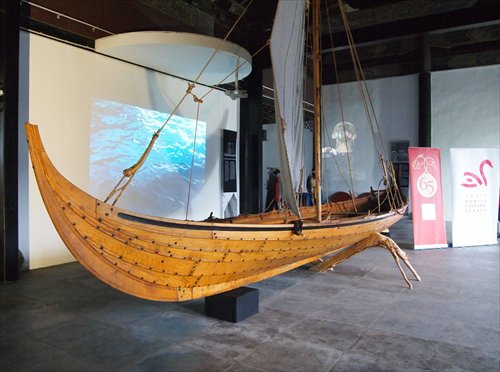
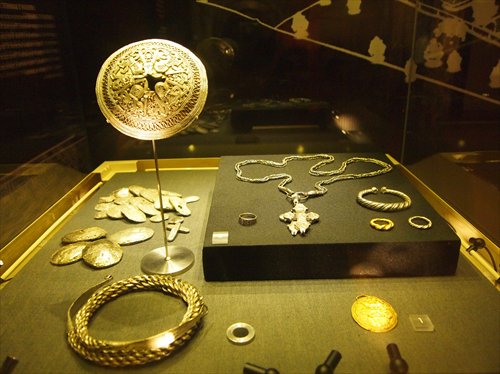
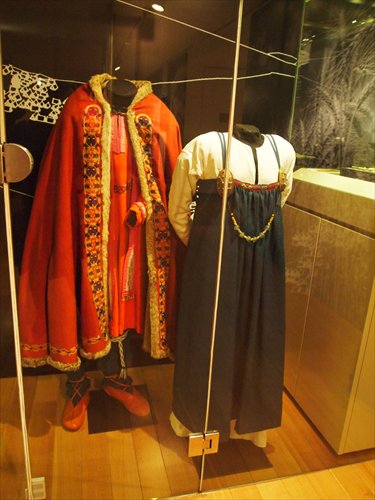
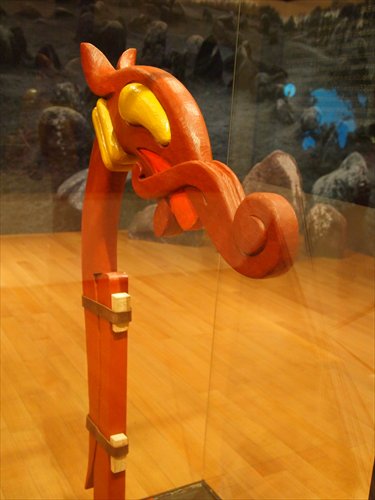
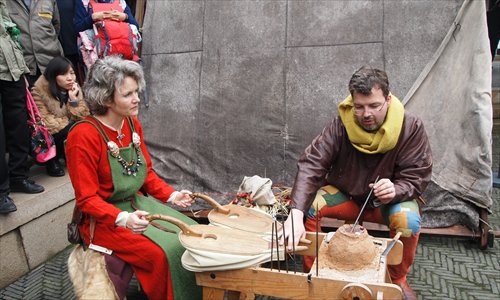
Forty-four artifacts dating back to the 8th century were put on display at the museum as part of Danish Cultural Season in China (2014-15), representing a glorious page in Danish history that has come to be referred to as the Viking Age.
Friis Arne Petersen, the Danish Ambassador to China, said that the most iconic relic of that era, the Viking boat, not only required tremendous strength to operate, but great craftsmanship to design. "The ships had to be robust enough for rough seas, to create speed and to carry cargo," he said.
An example of one such craft, the Eik Sande, is a full-scale reconstruction of a ship found at a burial mound in Norway in 1880. The identity of the warrior buried in the ship is unknown, but cut marks on the skeleton show that he died in battle sometime around the year 890. As Viking ships were a costly possession due to their intricacy and materials, only the wealthiest Vikings were buried in the magnificent ships, regarded as a vessel for "the final journey" to Valhalla, the warrior heaven of Norse mythology.
"Viking ships represent something very typically Danish, not just historically but also in terms of their symbol of us Danes as very global-oriented people," said the ambassador. "We are a small North European country, but we have always been seafaring and outgoing."
Marianne Blank, planner of the exhibition and project manager with the National Museum of Denmark, said Danes today continue to take pride in this part of history, which she wants to make more understandable for Chinese people.
"Being Viking means being tough. But we also hope that with this exhibition we can show the Chinese people how the Vikings had a special relationship with their ships - not just warships, but merchant ships, large seafaring vessels, small fishing boats and ferries for calmer waters," she said.
In addition to the Eik Sande reconstruction, parts of other ancient Viking ships, original and replicas, are also on display at the museum. Among them, an exhibit called Dragon's Head received attention from Chinese attendees for resembling the traditional Chinese dragon totem.
Dragons were worshipped by Vikings as a symbol of strength. While the average Viking Age warship was designed with animal heads protruding from the prow, to protect them from sea monsters, the bows of some leaders' boats were embellished with a dragon's head.
Noting that the appearance of the Viking dragon is remarkably similar to the classic dragon designs of ancient China, Ambassador Petersen said that he believes there might have been some middlemen that introduced Viking craftsmen to Chinese dragon art.
Though the origin of the Viking dragon head is debatable, another technique from the Viking Age that definitely did originate in China is lost-wax casting. It is believed that this technique, whereby a duplicate metal sculpture is cast from an original work, had been brought from China to Europe by nomadic people crossing the Eurasian steppe. Metal objects made from lost-wax casting were sold in the jewelry stores of Ribe, one of the first-established Danish towns.
At the Suzhou exhibition, two Danes dressed in Viking costumes can be seen demonstrating the lost-wax casting technique using a small furnace and man-powered blower. Also displayed at the exhibition are ancient coins, accessories and Viking apparel, all collected by the National Museum of Denmark, Museum of South West Jutland, Aarhus University and the Viking Ship Museum.
"Danish Vikings traveled all the way to Iceland, to Greenland, even to America, around 1,100 years ago - long before Columbus ever dreamt of going there. That outgoing, maritime tradition has really carried Danish mentality to be willing to go everywhere," Petersen said. "That is why we have 500 Danish companies in China today."
The Suzhou Museum exhibition, titled Dragons of the Northern Seas - The Viking Age of Denmark, will remain open until June 28.

The Eik Sande

Ancient accessories on display

Viking costumes at the exhibition

Dragon's Head at the exhibition

Lost-wax casting demonstration
Posted in: Metro Shanghai